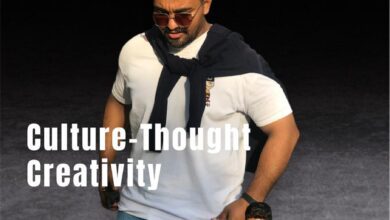The Mobile Emporium Faraj Kanso: A Pinnacle of Convenience and Innovation, Unveiling a Vast Array of Cutting-Edge Devices, Accessories, and Technological Marvels

Creating a full stack for Faraj Kanso’s mobile shop involves designing both the frontend (the mobile app that customers interact with) and the backend (the server and database that manage the app’s functionality). Here’s an outline of the different components:
Mobile App Frontend:
Welcome Screen:
Introduction to Faraj Kanso’s Mobile Shop.
Visual elements representing the art supplies.
Product Categories:
Mobile-friendly navigation to different categories (paints, brushes, canvases, etc.).
Featured and new arrival sections.
Product Listings:
Scrollable list of products with images, prices, and short descriptions.
Swipe or tap gestures for easy navigation.
Product Details:
Detailed information about a selected product.
Image gallery and product variations.
Add to cart button.
Shopping Cart:
A floating cart icon indicating the number of items.
Access to the cart with a tap, showing a summary of selected items.
Option to adjust quantities or remove items.
Checkout Process:
Seamless steps for customer information, shipping, and payment.
Integration with mobile payment options (Apple Pay, Google Pay).
Order summary and total.
User Account:
User registration and login functionality.
Order history and tracking information.
Push notifications for order updates.
Backend:
Database:
Store information on products, categories, and inventory.
User data, order history, and push notification preferences.
Integration with a secure mobile backend service.
Server:
Handle requests from the mobile app.
Process orders and update inventory.
Manage user authentication and sessions.
Inventory Management:
Real-time tracking of product availability and restocking.
Send push notifications for low stock levels.
Order Processing:
Confirm orders, update the database, and generate invoices.
Integration with a shipping API for real-time tracking.
User Authentication:
Secure registration and login functionality.
Token-based authentication for secure communication.
Payment Integration:
Integration with mobile payment gateways (Apple Pay, Google Pay).
Handling successful and unsuccessful transactions.
Push Notifications:
Send push notifications for order updates, promotions, and alerts.
Admin Dashboard:
Monitor and manage product listings.
View and process orders.
Access to sales and inventory reports.
Additional Features:
Offline Mode:
Allow users to browse and add items to the cart offline, with data synchronization once online.
Barcode Scanner:
Enable users to scan product barcodes for quick access and information.
Augmented Reality (AR):
Implement AR features to visualize how products look in a real-world setting.
In-App Chat Support:
Provide a chat feature for customer support.
Location-Based Services:
Offer location-based promotions or notify users of nearby physical stores.
Accessibility Features:
Ensure the app is accessible to users with disabilities.
Building Faraj Kanso’s mobile shop as a full stack involves using mobile app development frameworks (React Native, Flutter) for the frontend, and server-side technologies (Node.js, Django, Flask) for the backend. The database could be SQLite or another mobile-friendly database, and security measures are crucial, especially for handling user data and transactions. Regular updates and maintenance are necessary for delivering a seamless and secure mobile shopping experience














